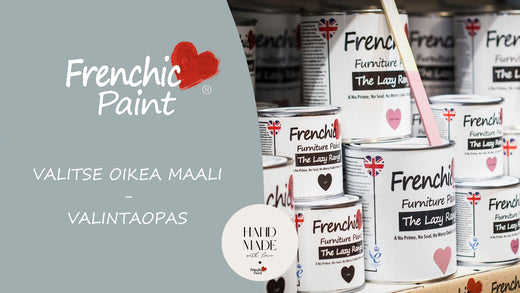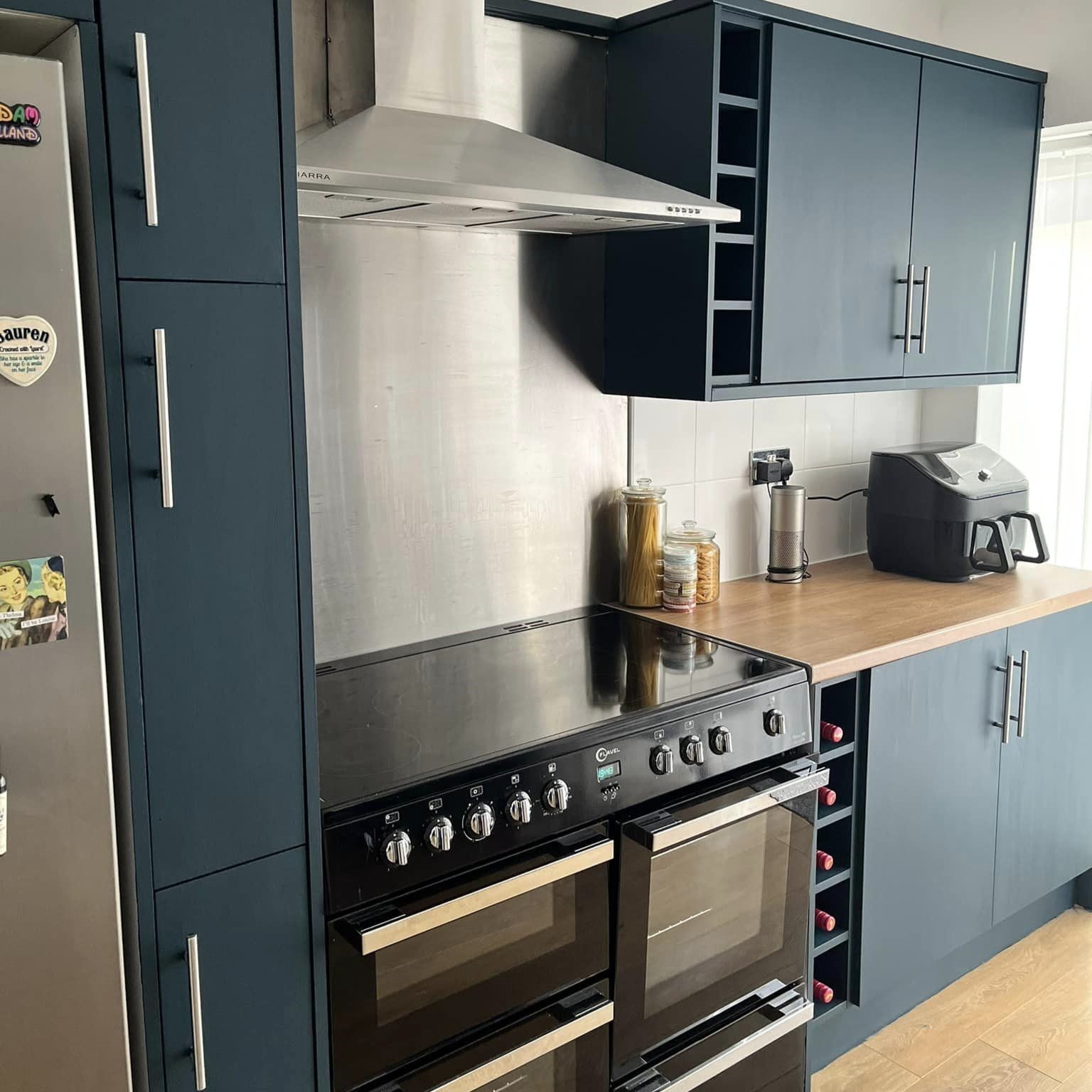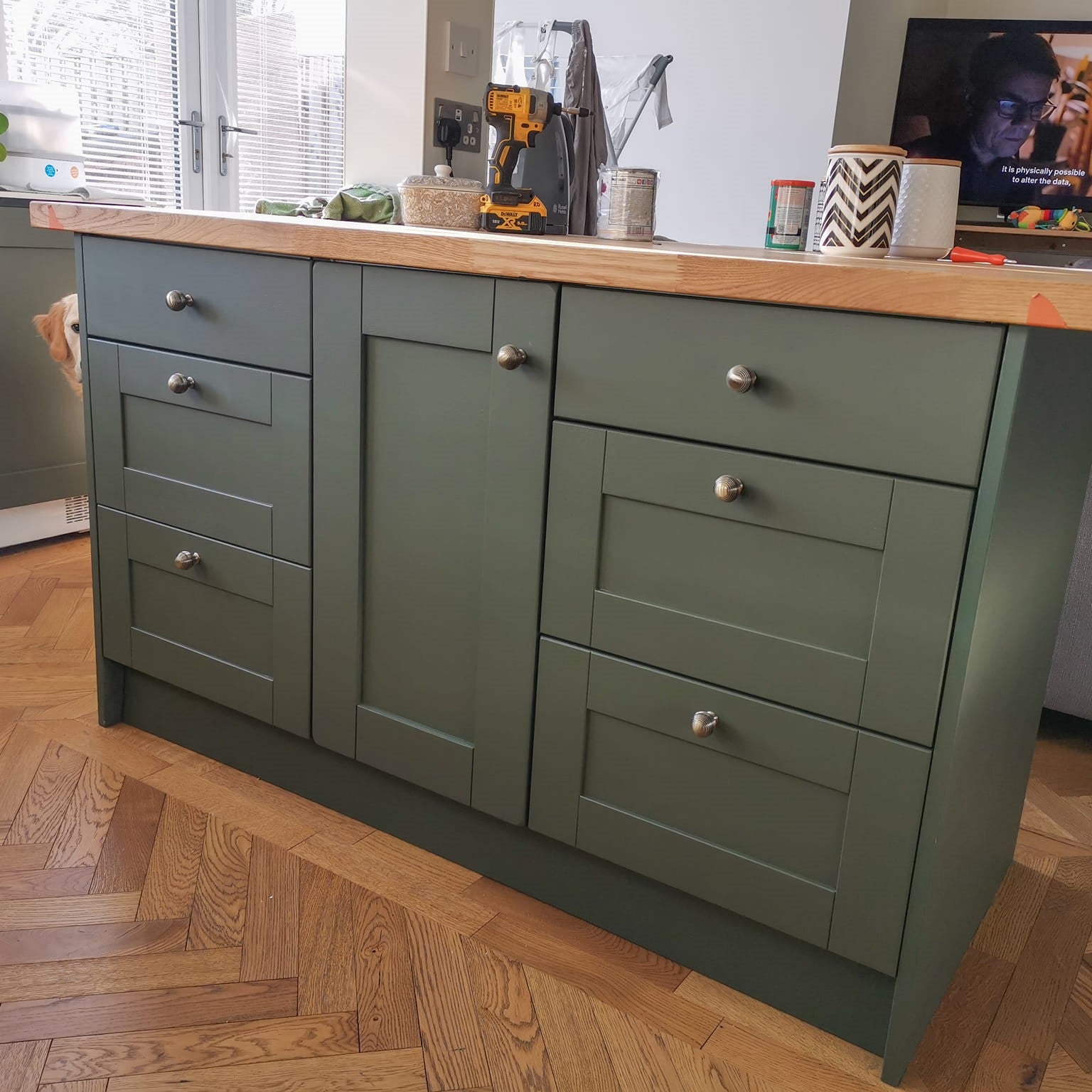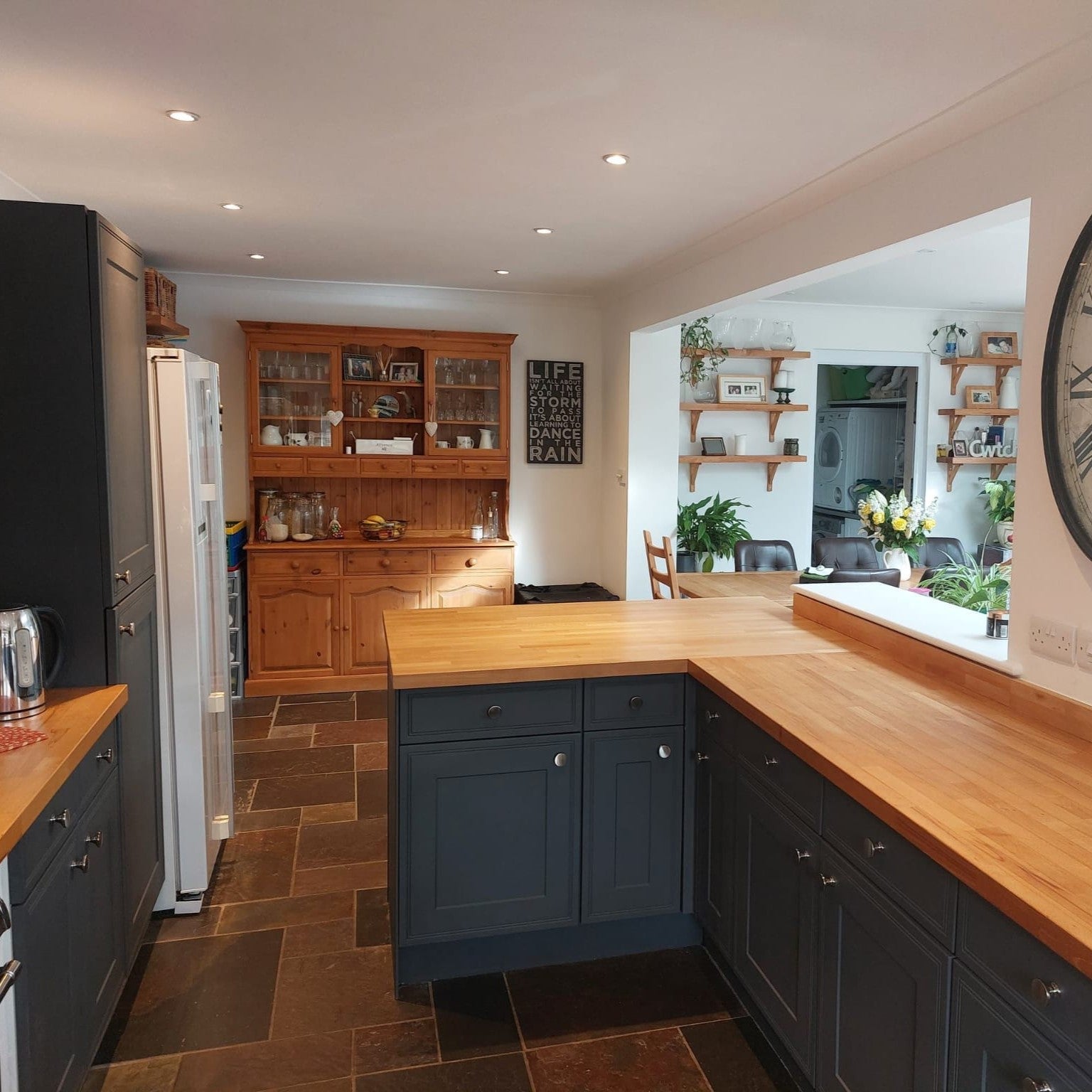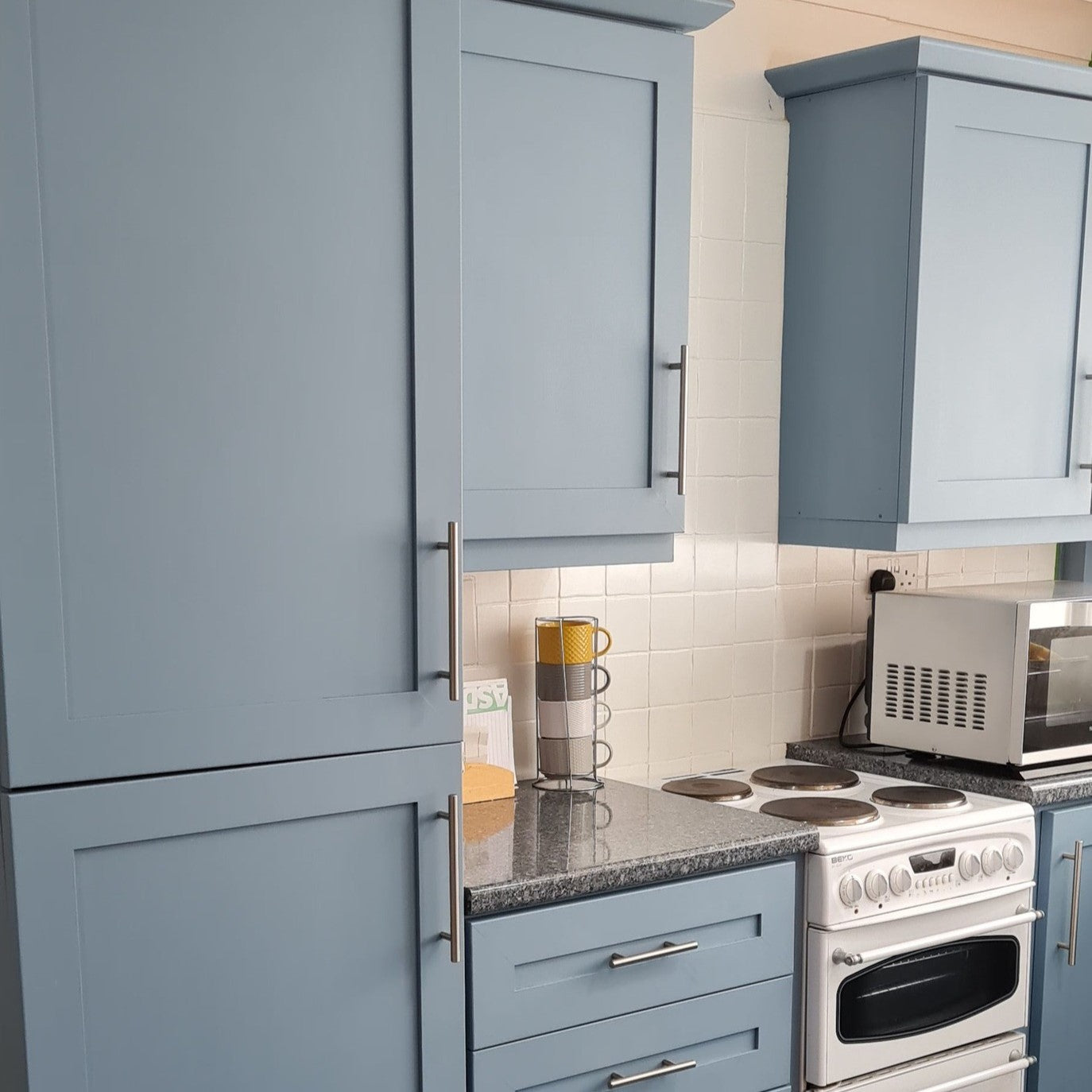In this blog, we briefly introduce 5 interesting interior styles that favor recycling and sustainable development.
Japandi, Smart Home, Maximalism, Biophilic Design, Sustainable Living...
With these timeless interior styles, you can update your home's look and bring a modern and current atmosphere to it.
Choose slow and sustainable lifestyle decorating instead of fast-changing trends, which adapts in everyday life precisely to your needs and preferences.
1. Biophilic Design: Nature Indoors
Biophilic design has become very popular in interior design because it brings the calming effect of nature into the home.
Using plants not only improves air quality but also adds green color and vitality to the space. Green walls and large houseplants are an excellent way to bring nature into your decor. Who wouldn't love thriving green plants!
For the backdrop of green plants, both green-toned walls that complement the space and contrasting colors that make the plants stand out beautifully work well: we recommend trying bold colors – turquoise, light pink, or even terracotta!
You can bring nature into your home with colors by choosing shades you see from your window: the blue-gray of rocks, the green of pine forests, and the reddish-brown of trunks. The shade of lilac bushes, the delicate pink of apple blossoms, natural white, or the various blues of lakes and skies.
Combine colors with natural materials such as wood surfaces, linen, stone countertops, and rattan. Wooden floors, stone countertops, and rattan furniture are durable choices that add a natural atmosphere to your home. These materials easily bring earthy tones into your decor and create a harmonious environment. The tips also suit boho-style interiors.
Maximizing light is an essential part of Biophilic Design. Large windows and surfaces that reflect natural light, such as light walls and mirrors, bring spaciousness and brightness to the space. During renovation, consider enlarging windows or adding skylights to allow natural light to flow in.
If natural light is not available, add artificial light both as LEDs and as indirect, soft decorative light points. For plants, it’s worth adding stylish and eye-catching grow lights with a timer, so it’s a pleasure to keep them on!
2. Sustainable Living: Sustainable Interior Design
Sustainable development is one of the hottest trends in interior design. By choosing recycled and recyclable materials, you can create an environmentally friendly home.
For example, furniture made from recycled wood (self-made) and decorative items made from recycled glass are both stylish and ecological choices. Doing it yourself saves both nature and money.
A good example is painting worn kitchen cabinets. Ordinary kitchen cabinets can be painted with two 750ml cans of Frenchic series paints! Compare the price of a paint can to new doors!
You can combine two or more old pieces of furniture into one new whole and finish the look uniformly by painting. You can update old furniture by replacing it with modern and higher legs, removing unnecessary decorations and moldings - the look changes immediately.
Sustainable interior design means reusing, renewing, and modifying old items - only your imagination limits you when making the old beautiful again!
Energy efficiency is a key part of sustainable interior design. LED lights and smart thermostats help reduce energy consumption. Upgrading lighting and heating systems to energy-efficient solutions is an investment that pays off in savings on your electricity bill.
Sustainable and recycled interior design doesn't mean giving up on trends. You can take inspiration from what new Ikea or other major furniture manufacturers offer, what colors are introduced to furniture, and then create your own versions or paint old furniture in new trendy colors.

Read more about recycled interior design here.
Vintage and second-hand furniture are perfect ways to decorate sustainably. Restoring and repainting old furniture gives them a new life.
This not only reduces waste but also brings uniqueness and personality to your home.
Old dressers, chairs, and tables can find a new place in your home with a little effort and paint.
If painting furniture is unfamiliar to you, start by reading our painting instructions - with the easy-to-use Frenchic paint, you'll succeed!
3. Japandi: A Combination of Japanese and Scandinavian Styles
Japandi is an interior design style that combines the best aspects of Japanese and Scandinavian design.
This harmonious combination emphasizes minimalism, closeness to nature, and functionality. Japandi style combines the zen spirit of Japanese design with the warmth and coziness of Scandinavian interiors.
The result is a space that is calm, aesthetically pleasing, and practical.
Minimalism is a key element in Japandi style. The goal is to create a simple and clear space with as few distractions as possible. Avoid unnecessary items and decorations and focus on the essentials. This helps create a space that is calm and pleasant to be in.
The Japandi style color palette is neutral and earthy. Use natural colors such as beige, gray, white, and light brown. Combining these shades creates a harmonious and calming atmosphere. You can add small touches of darker colors, like black or dark brown, to bring contrast and depth.
Choose simple and functional furniture that is high-quality and timeless. Wood is a popular material in Japandi style, especially light wood like birch and oak.
If you want to learn how to make a light oak surface-style wood finish yourself, see here the instructions for the easily achievable Frenchic wax and paint technique.
Avoid overly ornate furniture and instead choose minimalist but comfortable pieces. Japanese futon beds and Scandinavian sofas are great examples of this combination.
Painting walls in light, neutral shades helps create airiness and brightness in the space. Painting is an easy way to update the look of a room and bring in the aesthetics of Japandi style.
Japandi style emphasizes the use of natural materials. Wood, stone, bamboo, and linen are common materials that bring warmth and texture to the space. Using these materials helps create a harmonious connection to nature, which is an essential part of Japandi style.
Plants are an important part of Japandi style. Green plants bring vitality and a sense of nature to the space. The goal of Japandi style is to create a space that promotes calmness and mental balance.
The use of light is important in Japandi style. Make the most of natural light with large windows and light curtains. Artificial lighting can be indirect and soft, creating a warm and cozy atmosphere. Paper lanterns and bamboo lamps are good choices.
Choose thoughtful and simple decorative items that complement the space's aesthetics. Minimalist artworks, such as black-and-white sketches or abstract paintings, fit well with Japandi style. Decorations should be purposeful and bring joy, but there shouldn't be too many.
Japandi style is a perfect blend of Japanese and Scandinavian design, creating a calm, harmonious, and aesthetically pleasing environment.
This style emphasizes minimalism, natural materials, and functionality. By using neutral colors, simple lines, and nature-inspired elements, you can create a home that is both beautiful and calming.
The Japandi style is not just an interior trend but a lifestyle that promotes peace of mind and well-being.
4. Maximalism: A Celebration of Abundance
Maximalism is the complete opposite of minimalism, bringing colorfulness and abundance to interiors.
This style favors bold colors and patterns that attract attention and create a dynamic look.
Maximalist interiors are not afraid to combine different colors and patterns, making the space lively and energetic.
Read more tips on implementing layered interiors here.
Layers and textures are important in maximalist interiors. Combine different fabrics like velvet, silk, and linen to create a rich and diverse look.
Patterned wallpapers and colorful rugs add depth and interest to a room. During renovation, you can also add decorative moldings and panels to emphasize the abundant style.
Personal items and collectibles play a key role in maximalist interiors. This style encourages displaying all your beloved treasures, whether souvenirs, artworks, or book collections. Gather paintings and other decorative items into a rich and striking collage on a colorful wall.
In this style, personality gets to show. Mix and build your own DIY setups, invent new uses for items, and display surprising things – paint entire pieces of furniture gold or make other personal choices.
A red paint shade can be the perfect backdrop for bold items you want to highlight.
5. Smart Home Technology: Älykoti
Smart home technology has taken over interior design trends, making the home both modern and functional. Smart lighting is a great way to create different moods in a space. You can adjust the brightness and color of the lights according to the situation – from a romantic evening to a movie night with the press of a button.
Smart thermostats and heating systems not only increase comfort but also help save energy. You can program heating and cooling according to your own schedule, making your home energy-efficient. When renovating, consider integrating smart technology into new systems.
Smart speakers and home automation systems make everyday life easier and more fun. You can control music, lighting, and even appliances with voice commands. Integrating these devices into your decor brings a modern look and technology into everyday life. And who wouldn't want to chat with their own smart home?
Remember, the best interior design is one that reflects your own personality and makes your home a place where you feel most comfortable.




